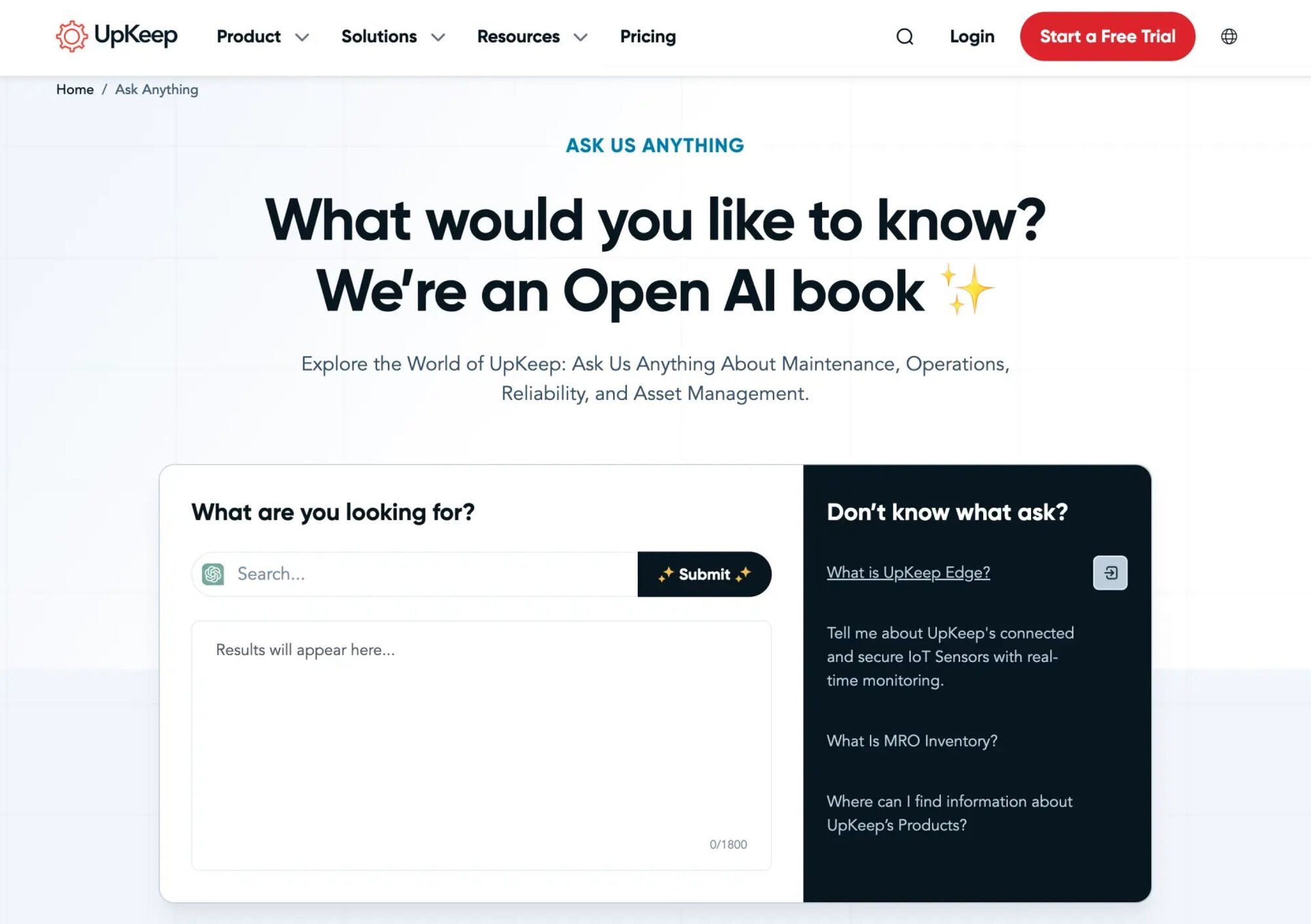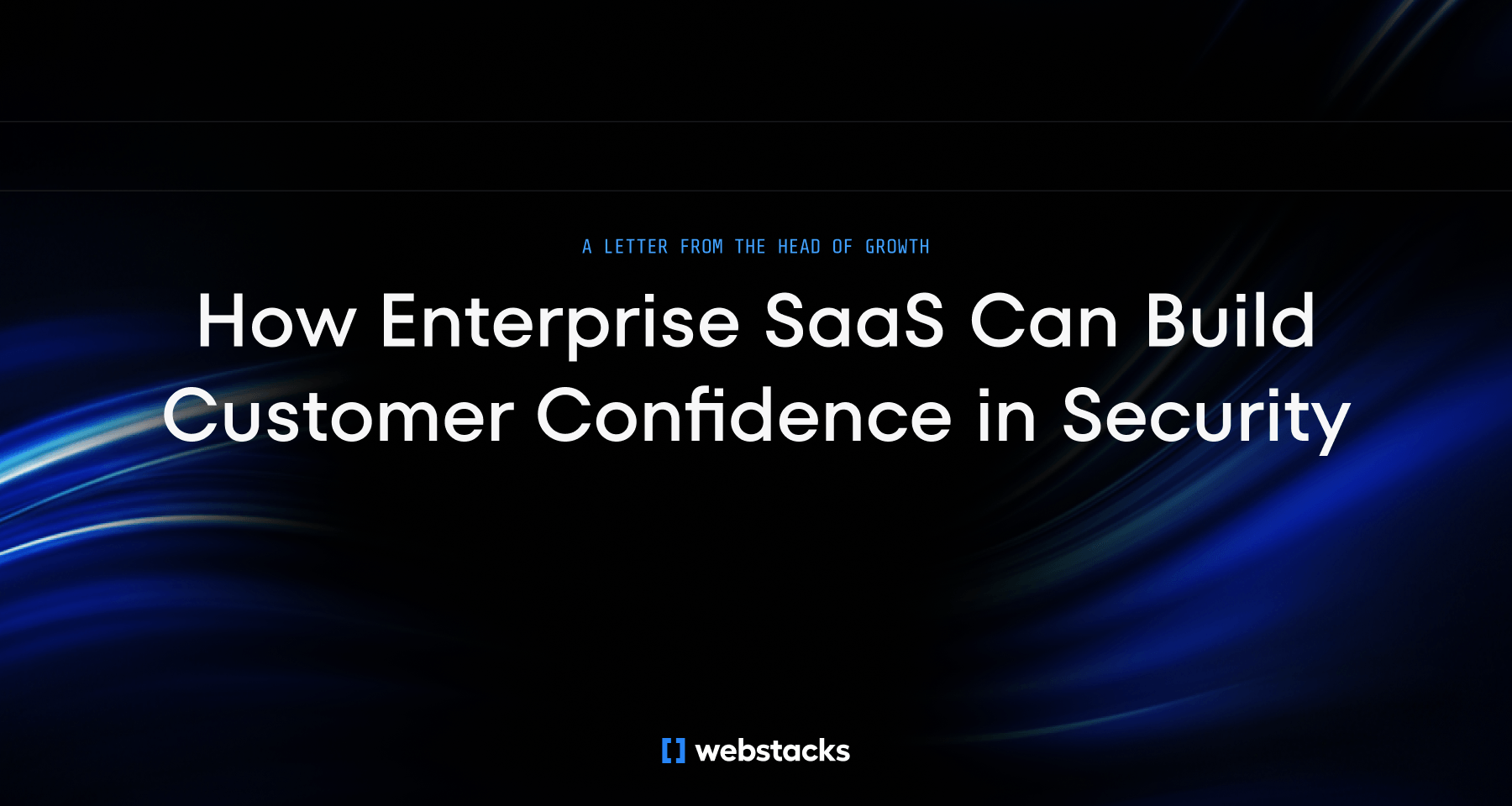Most enterprise websites are still designed like file cabinets: static, linear, and reliant on the user to know what they’re looking for.
But in a world where we ask ChatGPT everything from “summarize this call” to “what’s the best sushi spot nearby,” why are we still forcing prospects to dig through menus?
What if your website could listen first—and then guide?
Why This Matters
Because enterprise buyers don’t want to browse—they want clarity. And when they can’t quickly get answers to their questions, they bounce, stall, or head straight to your competitors.
When your website isn’t equipped to guide, it:
- Delays the sales cycle by forcing human intervention
- Buries your differentiators behind unnecessary clicks
- Wastes valuable traffic from high-intent visitors
The website shouldn’t be a waiting room for a sales call. A modern web experience should be capable of answering real questions—the kind that move someone from “curious” to “convinced.
The UX Gap in Modern SaaS Websites
Here’s what I see across nearly every modern SaaS site we audit: rigid IA, complex navigation, and a broken search experience that forces visitors to know exactly what they’re looking for in advance.
That’s fine if you’re selling one product to one persona. But once your platform serves RevOps, sales leaders, IT, and compliance teams—each with different questions and goals—the old model starts to fall apart.
The irony? The more powerful your product is, the harder it becomes for anyone to understand it on their own.
Enter the “Ask Instead of Browse” Era
We’ve entered a new kind of digital behavior. One where users expect to ask natural-language questions and get real answers.
They’re asking:
- “What does your AI actually do for RevOps?”
- “Can you pass a Google-level security review?”
- “How do you compare to Clari in pipeline forecasting?”
These aren’t keywords. They’re conversations. And the companies winning trust right now are the ones that know how to answer them without sending users down a rabbit hole of documentation.
From Trust Centers to Trust Conversations
There’s a massive opportunity here, especially for companies with a complex product, a technical audience, or an enterprise sales motion.
Imagine a security page where buyers can ask, “What certifications do you hold?” or “Do you encrypt data in transit and at rest?” and get a specific, helpful answer.
Or a product page that knows whether you’re a sales leader, a solutions engineer, or a candidate and adapts accordingly.
One of our clients, UpKeep, is already exploring this. We helped them launch an AI-powered website experience where users can ask plain-language questions and get intelligent, contextual responses. It’s not a chatbot. It’s a smarter way to guide people to the right content, faster.

More teams should be thinking this way because the friction isn’t going away on its own.
It’s Not About Adding a Chatbot
Too many SaaS companies assume “AI on the website” just means adding a support bot in the bottom corner. But this is bigger than that.
It’s about designing the experience around the question someone actually has, not the internal sitemap you mapped out months ago.
What if your homepage opened with, “What are you here to solve today?”
What if your security page started with, “We’ve passed enterprise reviews for companies like Google. Want to see how we’d pass yours?”
This isn’t hypothetical. The technology’s here. It’s just underutilized.
Where We Go From Here
At Webstacks, we work with B2B SaaS teams building complex products, often for multiple personas. And more often than not, their websites are holding them back.
The value is there—it’s just buried behind rigid menus, long pages, and dead-end FAQs.
Fixing that doesn’t start with flashy AI. It starts with clarity.
Here’s where we recommend starting:
- Map real sales questions to your current site structure. Listen to sales calls. Review demo recordings. List the 10 most common questions prospects ask. Then ask: can users find the answers on your site—quickly and clearly?
- Analyze behavior with tools like PostHog, FullStory, or Hotjar. Look for friction points: rage clicks, rapid exits, repeated searches. These show you where your site is confusing users or blocking them from answers.
- Prioritize what matters most to your visitors. Not all content should be treated equally. Use page layouts, sticky modules, or personalized elements to elevate the most common decision-making questions.
- Explore lightweight AI overlays that enhance content discoverability. This doesn’t mean adding a chatbot. Tools like Algolia NeuralSearch, OpenAI, or even custom-trained LLMs can turn your existing content into a more conversational interface.
- Test one high-intent page as your proof of concept. Start small. Pick your pricing page, trust center, or product overview—whichever gets the most attention from high-value buyers—and prototype a smarter way to guide visitors.
If your product is evolving to meet how people want to work, your website should too.
The next generation of SaaS websites won’t just display information. They’ll know how to deliver the right insight to the right person, at the right moment.
And the best time to start building toward that isn’t next quarter—it’s right now.




